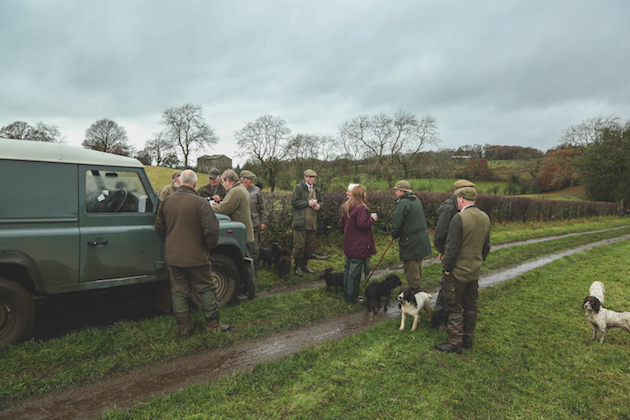A sense of belonging to the countryside community is good for our well being
A timely study has confirmed what many of us already knew, says Lindsay Waddell

Being part of the countryside community is important for people's mental and physical health
It’s ironic that two of those who contribute to Shooting Times, without any collusion I have to say, have chosen a similar theme for their pieces. I am referring to Laurence Catlow’s exceptional article on depression which will have struck a chord with many.
I had decided to take a look at the countryside from another angle, but an associated one. I noted results of a study a few weeks ago which stated that taking part in and being part of the countryside community was in fact good for your mental as well as your physical health.
Countryside community appreciate the life
No surprise there for the vast majority of us who do exactly that. It is important that the majority of those who live in our country, but who do not do what we do, appreciate that our chosen way of life is as important to us as the football season is to the supporters of that game.
I was fortunate enough to be a guest at High Park a few weeks ago, before the latest closure was imposed. Setting the sport — which, as always in that setting, was quite lovely — to one side, there is not the slightest doubt that being with a group of like-minded individuals, country people, all with their individual knowledge of the part they play in the management of the countryside, is a good thing for our well-being.
Those days are an essential part of our lives and we are much the poorer without them. It is not an easy thing to define, but a day spent with any one of them as a professional or amateur is a day well spent.
I have not the slightest doubt that days like that play their part in my good health, as did another similar experience when I was fortunate enough to be given a day on the Tweed by a very generous friend. Like High Park, the bag is an irrelevance. I did not take a fish on the Tweed but I had an exceptional day, mainly due to the company of Michael Farr, a good knowledgeable countryman who cares for the water where I fished.
The journey home is full of reflections of conversations and the information that you have gained. This is not a collection of hundreds of thousands of individuals who are scattered throughout the country; this is a community and a large, diverse one that stretches from Devon to the Shetlands. Countrymen and women, those employed in all sports, as well as anglers, pigeon shooters, rabbiting men, rough shooters, wildfowlers and many more. They are the glue that binds the countryside together, the stitches holding the fabric. Without them, what would be left?
Those who decry what we do and who we are would do well to reflect on that, especially in times like this when community means everything. As the number of those who live in the countryside — and who make their livelihood there — shrinks in relation to the urban population, that contact, that sense of belonging, means more and more.
Rural dialects
Rural dialects are slowly disappearing as a more communal language eases its way into our lives. I reeled off a sentence or two of my old Angus dialect to my son one day and he simply said: “That’s not English, that is a foreign language.” He hardly understood a word of it. It did make me wonder: if I did go back to my old glen, how many there would understand it? There are hundreds of rural dialects scattered throughout the countryside and they are as much a part of who we are and where we came from as the soil beneath our feet.
They are also, for many, part of that feeling of belonging and well-being, part of the sporting heritage and vital for our way of life.
Rooks and jackdaws
If it were not so sad, I’m sure the Defra officials who drafted the new general licence could apply to RADA for membership under the comedy section. To remove rooks and jackdaws from the licence is no more or less than a joke. They are serious predators of eggs and chicks, they cause considerable damage to crops at times and they are one of the main means by which diseases are conveyed to livestock from farm to farm. These facts make their control all the more important in these days of increasing numbers of open-range animals. In the uplands, we are struggling to hold back the tide of predation and it is a travesty that the managers are not able to control these birds. Let’s hope some sense prevails.








